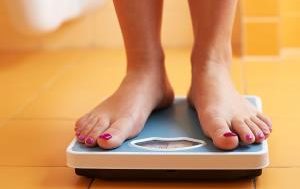If you take a look at the GOLO diet’s website, it’s easy to see the appeal of this plan. The program suggests that its diet — along with its dietary supplement — can help you lose weight, keep it off, increase your metabolic efficiency and prevent or reverse health conditions. The core concept behind the GOLO diet is the theory that weight problems are caused by insulin resistance. The diet aims to help people maintain healthy insulin levels so their cells can process glucose from their blood efficiently. When insulin levels are within a healthy range, it may be easier to lose weight
GOLO claims that its proprietary supplement, Release, which is promoted as a feature of the diet, can help control insulin, thereby nudging the body to lose weight without dieting. The company also claims that by pairing its balanced meal plan, The GOLO Metabolic Plan, with the Release supplement, “your metabolism gets faster and is able to convert food into energy quickly.”
Can the GOLO diet pill help with weight loss?
The bottom line? No. The Release supplement includes a little magnesium, plus zinc, chromium and some other plant compounds. Though the company cites data suggesting their Release supplement can enhance weight loss, the quality of the research is low. All of it is sponsored by the company, it involves very small populations being observed over a short period of time and most of it isn’t published in peer-reviewed journals. The peer review process means that scientific findings are subject to the scrutiny of others with expertise in the field and without this, the findings aren’t nearly as meaningful.
Here’s what we know: There are no magic bullets for weight loss. Supplements have never been demonstrated to produce long-term weight loss benefits. Also, even if a supplement is plant-based and natural, it might cause side effects. Supplements can also interfere with the medications you’re taking. For example, ingredients in Release may interfere with diabetes medication, which might cause your blood sugar to dip too low.
The basics of the GOLO diet plan
The GOLO diet itself has some merit. It is a calorie-reducing diet and its eating plan — the GOLO Metabolic Plan — supplies between 1,300 and 1,800 calories per day, through whole foods, like fruits, vegetables, meats, eggs and grains, according to its website. These foods are permitted in portioned amounts so while you can have some brown rice or a dinner roll, it might be a much smaller portion (say, 1/2 cup of rice) than the amount you’re used to eating. Processed foods and treats aren’t recommended, but you can use the plan’s fit points (earned by exercising) to eat these foods or heartier portions if you wish.
Emphasizing whole foods over heavily processed ones is a good strategy for managing your weight. In one study that compared the same set of participants who were fed a whole foods diet or a calorie-, carb-, fat- and protein-matched processed foods diet, participants ate faster and more on the processed foods diet, gaining about two pounds over a two week period. The same people lost about two pounds over the same period when eating whole foods. Whole foods take longer to eat, have more fiber and are more filling than processed foods, so embracing these types of foods may promote weight loss. Learning how to manage portion sizes and balance meals is also useful. In this case, you might find that your typical eating pattern is low on veggies but high on grains, whereas a more balanced approach is to reverse the ratio. In this case, a pasta dinner might involve 1/2 cup of pasta and 2 cups of veggies instead of 2 cups of pasta and 1/2 cup of veggies.
However, the GOLO diet may not be a healthy choice for everybody, especially if you’re pregnant or nursing, or if you have a medical condition that requires you to take medication that could be impacted by the Release supplement.
Will the GOLO diet help you lose weight?
If you’re used to eating larger portions of foods and your diet includes a lot of heavily processed foods, making the changes suggested on the GOLO diet could produce weight loss. But these changes may also feel restrictive and overwhelming. Many weight-loss programs are unsustainable because they don’t match your lifestyle (such as how often you like to cook or order takeout) and food preferences — and because they promote portions that aren’t filling enough for you. It’s hard to put up with hunger.
To lose weight and keep it off, you need a set of skills that involves more than what you eat or popping a poorly studied supplement that will also prove to be a big expense over time. Instead, eating well, tuning in to your body’s appetite signals, staying active, getting sufficient sleep and managing stress healthfully are better long-term strategies for weight loss and insulin management.
4 points to consider before trying the GOLO diet
Anyone can lose weight on a low-calorie menu, but whether that’s healthy or sustainable for you is the real question. And whether the supplement can enhance your weight loss is certainly questionable. If you want to give the GOLO diet a try, consider these things first:
- If you’re pregnant or nursing, the calorie levels may be too low and it’s best to avoid supplements unless recommended by your doctor.
- If you have a medical condition, including insulin resistance, prediabetes or type 2 diabetes, check with your physician before beginning the GOLO diet and Release supplement. If you do go forward with GOLO, you may need to adjust your medications.
- Chronic dieters and those who have any disordered eating habits should think twice about the GOLO diet. It’s unhealthy to lose and then regain weight repeatedly, and the GOLO diet may contribute to this pattern.
- To promote a healthier insulin response, it’s only necessary to lose 5% of your weight. For long-term success, pick an approach that’s based on whole foods, limits (but doesn’t unnecessarily restrict) less healthful processed fare and teaches other tools, such as learning how to respond to your body’s appetite signals.



